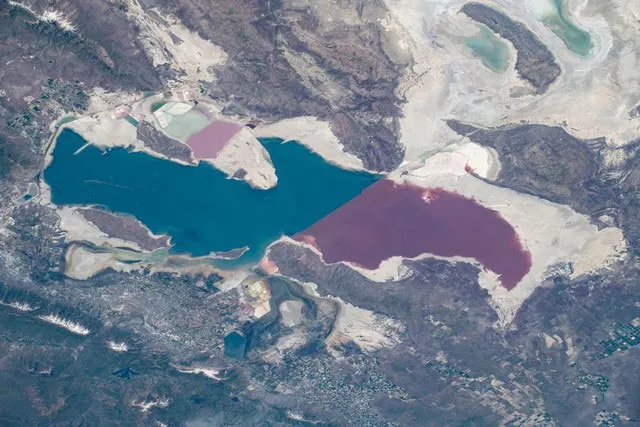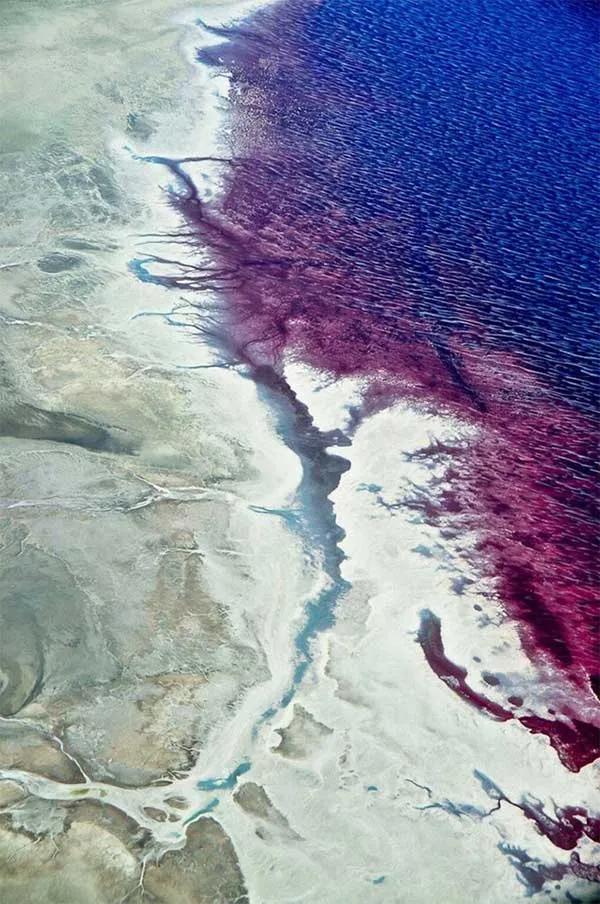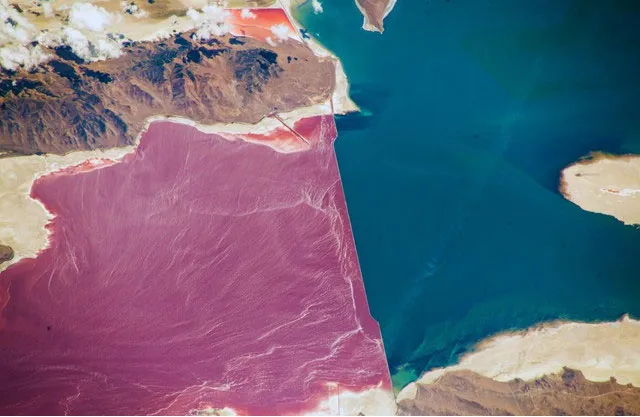Utah, a state renowned for its majestic national parks and breathtaking desert landscapes, harbors another treasure: stunning turquoise lakes. From the unique Great Salt Lake with its peculiar bi-colored waters to the crystal-clear freshwater lakes nestled amidst mountains, Utah is an ideal destination for those who adore pristine natural beauty and seek unique travel experiences.
Great Salt Lake: A Unique Bi-Colored Wonder
The Great Salt Lake, located in northwestern Utah, is one of the largest saltwater lakes in the Western Hemisphere. Its distinctive feature is the strange color division: one side displays a blue hue while the other shimmers in vibrant reddish-pink. This phenomenon results from a combination of topography, salt concentration, and the presence of specific microorganisms.

This color separation originates from the Lucin Cutoff, a 102-mile-long railway line built in the early 1900s, dividing the lake into two parts. Initially a wooden trestle, it was later replaced by a rock-fill causeway, restricting water exchange between the two sections and leading to differences in salt concentration.
Turquoise Blue in the South Arm
The southern part of the lake receives freshwater from three major rivers: the Bear, Weber, and Jordan, diluting the salt concentration. The turquoise blue color here is primarily due to sunlight reflecting off the lakebed. While not salty enough for Dunaliella salina algae to thrive, this water still hosts various microorganisms, especially bacteria and cyanobacteria, contributing to the characteristic blue hue.
Vibrant Red in the North Arm
In contrast to the south, the north arm of the Great Salt Lake is completely isolated from freshwater sources. Over time, the salt concentration here has increased to nearly 10 times that of the ocean, creating an ideal habitat for halophilic organisms and certain types of algae.

Dunaliella salina, a single-celled alga containing red pigments, is the main “culprit” behind the vibrant red color in the north arm. This algae thrives in salty water and sunlight, and the lake’s color can change seasonally, becoming more intense in the summer when water evaporation increases. Don’t worry, despite the red color, the north arm’s water is not toxic; the color comes from beta-carotene, a beneficial antioxidant.

Diverse Ecosystem and Tourist Activities
The Great Salt Lake is home to a diverse array of unique flora and fauna adapted to the harsh saltwater environment, including grebes, gulls, brine shrimp, and tilapia. The wetlands surrounding the lake are also crucial habitats for millions of migratory and water birds.
Besides its peculiar natural beauty, the Great Salt Lake is also an appealing tourist destination with numerous exciting activities such as swimming (in mineral-rich salt water), sunbathing, kayaking, and birdwatching. Visitors can also tour salt harvesting facilities to learn about the history and salt production process.

Other Turquoise Freshwater Lakes in Utah
Beyond the Great Salt Lake, Utah boasts many other stunning freshwater lakes, offering diverse and enriching travel experiences.
- Bear Lake: Situated on the border between Utah and Idaho, Bear Lake is one of the largest freshwater lakes in North America. Renowned for its crystal-clear turquoise waters and fine white sandy beaches, Bear Lake is an ideal destination for activities like swimming, boating, fishing, and camping.
- Panguitch Lake: Located near Bryce Canyon National Park, Panguitch Lake is a hidden gem nestled amidst majestic mountains. This lake is famous for its beautiful turquoise waters and pristine natural scenery. Visitors can enjoy activities such as fishing, kayaking, hiking, and camping.
- Jordanelle Reservoir: Situated near the Park City ski resort area, Jordanelle Reservoir is a man-made reservoir surrounded by snow-capped mountains. This lake is a popular destination for activities like swimming, boating, fishing, and waterskiing.
Protecting Utah’s “Gems”
The unique ecosystems of the Great Salt Lake and other lakes in Utah face numerous threats, including environmental pollution, climate change, and over-extraction of resources. Preserving these “gems” is crucial for maintaining biodiversity and ensuring valuable natural resources for future generations.

Conclusion
The turquoise lake destinations in Utah are not only attractive tourist spots but also natural wonders that need to be cherished and protected. Come and explore the unique beauty of these lakes, and join hands in protecting the environment so that future generations can also admire this beauty. Are you ready for a journey to discover the stunning turquoise lakes in Utah?